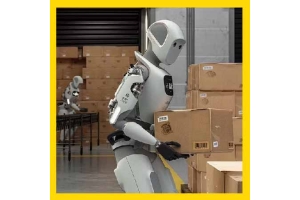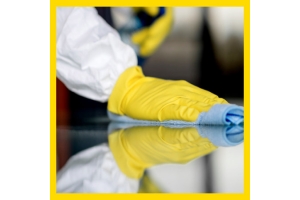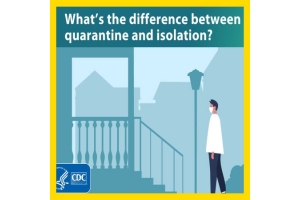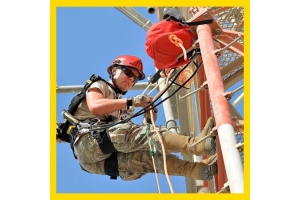Currency
-
March 16, 2019The International Safety Equipment Association (ISEA) has released a new standard — ANSI/ISEA 138-2019, American National Standard for Performance and Classification for Impact Resistant Hand Protection — to improve on the impact performance of industrial gloves. The new standard builds upon the widely used ANSI/ISEA 105-2016, American National Standard for Hand Protection Classification.
ANSI/ISEA 138 will:
- Define an agreed test method
- Include three defined performance levels
- Specify a pictogram mark for each of the levels for compliant gloves
- Require products be tested in a laboratory with a certificate of accreditation meeting the requirements of ISO/IEC
17025:2017, General requirements for the competence of testing and calibration laboratories
The U.S. and Europe have long had standards for industrial gloves that protect hands from cuts, punctures, abrasion and chemical exposure, but ANSI/ISEA - Define an agreed test method
-
March 16, 2019When working in freezing temperatures, it always pays to be prepared. Whether you’re working in a year-round cold environment such as cold storage or you’re working construction in the dead of winter, knowing a few cold weather safety tips can help you remain both functional and comfortable on the job.
So if you’ve recently taken a position that requires you to work long hours in the cold, there are things you can do to start preparing for your new job. Here are a few tips to help you keep warm when it’s well below freezing:
Fuel your body
It’s not a coincidence that you’re hungrier in the winter. Eating can give your body a temporary boost in temperature when nutrients are digested. This warming effect occurs roughly 30 to 60 minutes after you eat and lasts for several hours, so plan your snacks and meals accordingly. Instead of 3 large meals, eat smaller portions more frequently throughout the day.
Certain foods also help you -
March 09, 2019The Fire Industry Association’s (FIA) Extinguishing Council has updated a number of guidance notes and fact files around portable fire extinguishing – covering the ADR, electrical risks, environmental guidance and more.
Anyone who deals with portable extinguishers can update their understanding of best practice and legal requirements by downloading the latest updates
Fact File 78: Portable extinguishers under the ADR
The European Agreement concerning the International Carriage of Dangerous Goods by Road (ADR) refers to portable fire extinguishers in two ways:
- As an article for transport to which the provisions of the ADR apply
- And as safety equipment required to be carried by vehicles transporting dangerous goods.
Fact file 79: Class F fires
Created to help understand what Class - As an article for transport to which the provisions of the ADR apply
-
March 09, 2019Baton Rouge, LA — The OSHA Region 6 Training Institute Education Centers recently released a video on trenching and excavation safety.
The one-hour video addresses best practices, cave-in protection, resources and other hazards workers encounter in trenching.
“When done safely, trenching operations can reduce worker exposure to other potential hazards, including falls, falling loads, hazardous atmospheres and incidents involving mobile equipment,” the Mid-South OTI Education Center states on its website. “To protect these workers, employers must think about preventing injuries and providing workers with the right equipment for the job.”
Registration is required to access the free video.
According to OSHA, 23 workers died in trench collapses in 2016, exceeding the combined total from 2014 and 2015. The agency has made the issue a priority goal and reminds workers -
March 09, 2019We’ve seen the popularity of lighter, more flexible and breathable segmented trim, and more enhanced visibility by integrating LED luminescence directly on the trim.
Having spent 10 years in the fire protective clothing industry, I assumed marketing Hi-Vis garment was going to be easy. Turns out, it’s far more complex than I had anticipated. While we tend to think only in terms of the visibility factor, it is important to remember that the latest ANSI/ISEA 107-2015 standard covers both basic design and performance of high visibility in work garments. The emphasis regarding high visibility garments has traditionally been on the photometric requirements -- the minimum amount of component materials, colors, and placement to create garments for enhancing the visibility of workers. Let’s review some basics on this subject.
Colors & class
-
March 09, 2019
You want to stand out to be seen by drivers when working alongside traffic
We live in a world of color. From nature itself, to the intense display of the phones in our pockets, we are constantly looking out at a vivid display that can often be overwhelming.
With so much going on, it can often be difficult to spot the contrasting elements. The ability to discern a human being from their environment shouldn’t be as challenging as spotting a chameleon. Of the many concerns we have as drivers, the safety of pedestrians should be a cornerstone.
Make sure you’re noticed
As far as distractions while driving goes, there are plenty, so the need to stand out as a pedestrian is a must, and is the responsibility of the pedestrian to be noticed. Fading into the background when working in oncoming traffic can be a death wish. Independent of the -
March 02, 2019An arc fault in an electrical distribution panel is difficult to ignore. A massive build-up of pressure within the panel, rising to 25 tonnes per square metre, leads to what can only be described as an explosion, sending components flying through the air, destroying the installation and threatening the life of anyone nearby. If that initial blast is not damaging enough, the aftermath brings further risks, with the prospect of lengthy downtime.
New research commissioned by Eaton estimates that for a typical food industry plant, the cost of production downtime alone could escalate to $46,000 in 24 hours. Then there is the cost of replacement switchgear, potential legal action and reputational damage. Despite these palpable dangers, electrical distribution panels are easy to overlook in a safety analysis of commercial building infrastructure. The equipment is generally tucked out of sight and the prevailing view is that switchgear is absolutely safe as long as it conforms with -
March 02, 2019Most organizations don’t have a safety strategy, and the few that do often have a competing and conflicting production strategy.
The popularity of models like The Bradley Curve indicate a hunger to understand safety culture and develop a roadmap to excellence. Moving through the three stages is more concrete than many academic models that describe the artifacts or characteristics of culture to address. But few of these models capture the whole picture of safety excellence, in which culture is just one element. They are descriptive but not prescriptive, describing an ideal culture without prescribing the steps to move an existing culture in that direction.
In our consulting, which has impacted over 1,600 sites, we have found that those who achieve true safety excellence (which includes an interdependent safety culture) methodically address four major elements and two -
March 02, 2019Overusing devices can lead to early vision problems
A 2017 study by Ernst & Young found that Singaporeans spent most of their waking hours - an average of 12 hours and 42 minutes - on digital devices every day.
That is pretty much most of our waking hours, and the effects are not ideal. About 80 per cent of people here are myopic by the time they are 18 years old. And while research has not quite backed this up, doctors and optometrists are increasingly pointing their fingers at heavy usage of smartphones for early onset of presbyopia (lao hua in Mandarin).
In Singapore, people are getting presbyopia at as early as 37 years old - it typically affects only those in their 40s and above. While genes have a say in how well we see, our lifestyle habits play a heavy part in preventing eye strain, improving vision and reducing the risk of conditions such as glaucoma, early cataracts and macular degeneration, which may eventually cause blindness.









